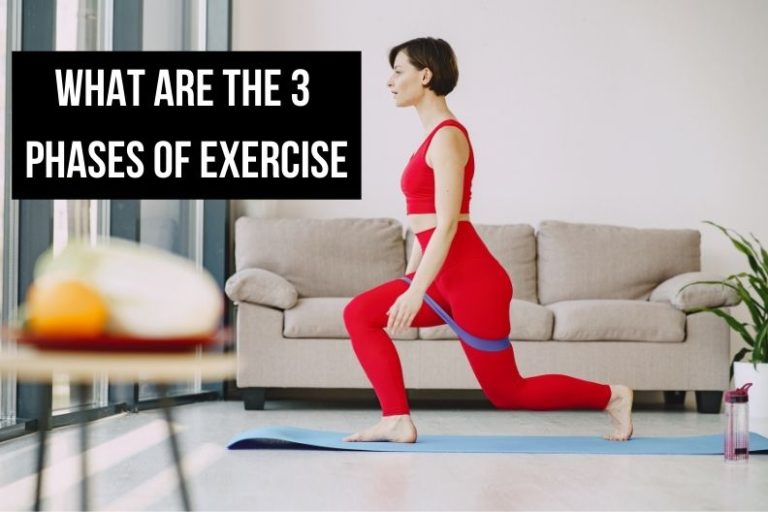The Importance of Proper Posture for Overall Health
This post contains affiliate links. This means I will make a commission at no extra cost to you should you click through and make a purchase. Read the full disclosure here.
Have you ever considered the impact of your posture on your overall health? Most people don’t pay much attention to their posture until they experience discomfort or pain. However, maintaining proper posture is crucial for your well-being. In this article, we will explore the significance of good posture and provide practical tips to improve it.
Table of Contents
What is posture and why is it important?
Posture refers to the alignment and positioning of your body parts while sitting, standing, or moving. It plays a vital role in maintaining the proper functioning of your muscles, bones, and internal organs. Good posture ensures that your body is in optimal balance, reducing strain on various body systems.
Effects of poor posture on health
When you consistently have poor posture, it can lead to a range of health issues. Let’s delve into some of the common effects of maintaining improper posture:
Musculoskeletal problems
Slouching or hunching over can strain your muscles and joints, leading to musculoskeletal problems. These issues may include back pain, neck pain, shoulder stiffness, and joint misalignment. Over time, chronic poor posture can even contribute to the development of conditions such as osteoarthritis.
Digestive issues
Believe it or not, poor posture can affect your digestion. When you sit or stand with a slouched posture, it compresses your abdominal organs, hindering their proper function. This compression can result in issues like acid reflux, constipation, and bloating.
Breathing difficulties
Maintaining a hunched position can restrict your lung capacity, affecting your ability to breathe deeply. Proper posture allows for optimal lung expansion, ensuring efficient oxygen intake. By contrast, poor posture can lead to shallow breathing, reducing energy levels and cognitive function.
Mental and emotional well-being
Your posture not only affects your physical health but also impacts your mental and emotional well-being. Studies have shown that slouched posture can contribute to feelings of depression, decreased self-esteem, and reduced productivity. On the other hand, good posture can boost confidence, mood, and overall cognitive performance.
Benefits of good posture
Now that we understand the negative effects of poor posture, let’s explore the numerous benefits of maintaining good posture:
Improved musculoskeletal health
Practicing good posture helps align your spine, reducing strain on your muscles and joints. This alignment promotes proper musculoskeletal health, alleviating or preventing back, neck, and joint pain. Good posture also enhances muscle strength and flexibility, supporting overall mobility.
Enhanced digestion
Maintaining an upright posture during meals allows for optimal digestion. When you sit tall and straight, your abdominal organs have more space to function efficiently. This aids digestion and prevents common issues like acid reflux, indigestion, and bloating.
Better breathing
Proper posture facilitates unrestricted lung expansion, enabling deep and efficient breathing. It ensures an adequate oxygen supply to your body and brain, enhancing energy levels, focus, and cognitive function.
Increased confidence and mood
Believe it or not, your posture can influence your self-confidence and mood. When you stand tall with good posture, you project an image of self-assuredness and assertiveness. This, in turn, boosts your confidence and positively impacts your mood, making you feel more empowered and ready to tackle challenges.
Tips for maintaining proper posture
Now that we understand the importance and benefits of good posture, let’s discuss some practical tips to help you maintain it throughout your daily activities:
Ergonomic workstations
Ensure your work environment is ergonomically designed to support good posture. Invest in an adjustable chair and desk that allow for proper alignment of your spine. Position your computer screen at eye level and use a keyboard and mouse that promote a natural wrist position.
Regular breaks and stretching
Take regular breaks from prolonged sitting or standing. During these breaks, perform simple stretching exercises to loosen up your muscles and maintain flexibility. Stretching can help counteract the negative effects of prolonged postures and improve blood circulation.
Exercise and strengthening
Engage in regular exercise and strength-training activities to improve your overall posture. Focus on exercises that target your core muscles, back, and shoulders. Strengthening these areas will provide better support for your spine and help you maintain proper alignment.
How to improve posture while sitting
Sitting for extended periods can strain your posture. Here are some tips to help you improve your posture while sitting:
Chair and desk setup
Choose a chair that provides adequate lumbar support and adjust its height to ensure your feet are flat on the floor. Position your desk at a height that allows your forearms to rest parallel to the ground when typing.
Sitting position and alignment
Sit with your back against the chair’s backrest, ensuring your shoulders are relaxed. Keep your feet flat on the floor, knees at a 90-degree angle, and thighs parallel to the ground. Avoid crossing your legs or slouching forward.
Lumbar support
Use a cushion or rolled-up towel to support your lower back’s natural curve. This additional lumbar support promotes good spinal alignment while sitting.
How to improve posture while standing
Maintaining proper posture while standing is equally important. Follow these guidelines to enhance your standing posture:
Foot position and weight distribution
Stand with your feet hip-width apart and distribute your weight evenly between both feet. Avoid locking your knees or tilting your pelvis forward or backward. Engage your core muscles to maintain stability.
Spine alignment
Keep your spine straight and aligned. Imagine a string pulling the top of your head upward, elongating your spine. Avoid slouching or overarching your back.
Core engagement
Activate your core muscles by gently pulling your belly button towards your spine. This engagement helps stabilize your body and supports proper alignment of your spine.
How to improve posture while walking and exercising
Maintaining good posture while walking and exercising is essential for maximizing the benefits and minimizing the risk of injuries. Follow these tips to improve your posture during physical activity:
Walking technique
Walk with your head held high, looking straight ahead. Relax your shoulders, swing your arms naturally, and take smooth, purposeful strides. Engage your core for stability and maintain an upright posture throughout your walk.
Exercise form and technique
Whether you’re lifting weights, practicing yoga, or engaging in any other form of exercise, focus on maintaining proper form and technique. Follow the instructions of a qualified instructor or trainer to ensure correct posture during each exercise, protecting yourself from injury and optimizing the workout’s benefits.
Conclusion
Maintaining proper posture is more than just having good manners. It is a crucial aspect of your overall health and well-being. By paying attention to your posture and implementing the tips mentioned in this article, you can experience improved musculoskeletal health, better digestion, enhanced breathing, and increased confidence. Remember, small changes in your daily habits can have a significant impact on your posture and overall health.
FAQs
1. How long does it take to improve posture?
Improving posture is a gradual process that requires consistency and practice. With dedicated effort and regular implementation of posture-improving techniques, you can start noticing positive changes within a few weeks or months.
2. Can poor posture be corrected in adults?
Yes, adults can correct their posture with conscious effort and consistent practice. It may take more time and effort compared to correcting posture in children, but it is definitely possible.
3. Are there any specific exercises for improving posture?
Yes, there are specific exercises and stretches that can help improve posture. Consult a fitness professional or physical therapist who can guide you through exercises targeting the muscles necessary for good posture.
4. Can using posture correctors help?
Posture correctors can be useful tools to remind you to maintain proper posture. However, it is essential to strengthen the muscles supporting good posture rather than relying solely on external aids.
5. Can poor posture cause headaches?
Yes, poor posture, especially in the neck and upper back, can contribute to tension headaches. Correcting posture and relieving muscle tension through stretching and strengthening exercises may help alleviate headaches associated with poor posture.







